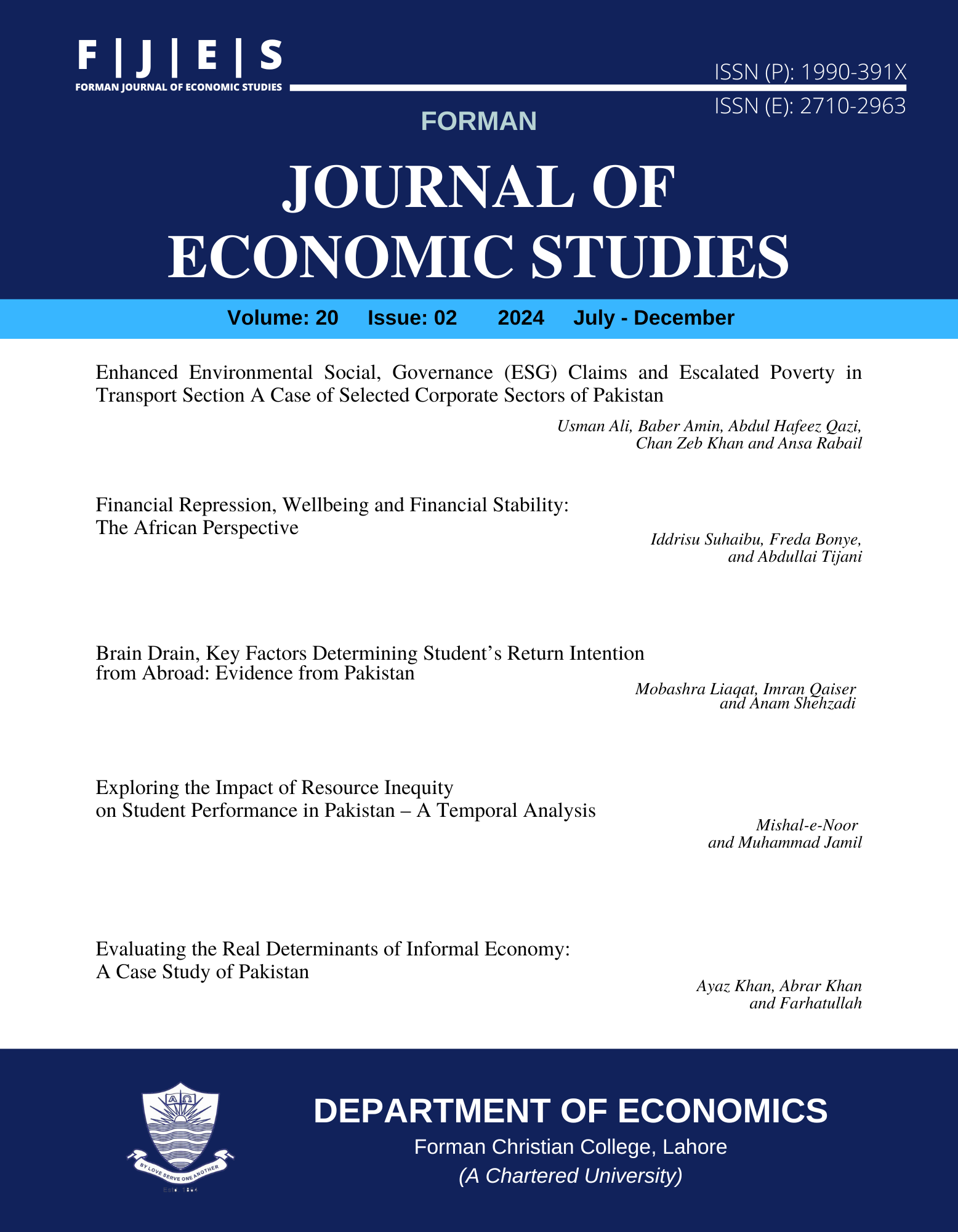Impact of Food Insecurity on Health Care Utilization in Pakistan: Role of SDG 2 in Achieving Health Equity
Keywords:
SDG, Food Insecurity, Healthcare Utilization, FIES, Probit, EquityAbstract
The global community aims to eradicate hunger by 2030 through a renewed focus on agricultural development, specifically SDG 2, to ensure food insecurity and nutrition. Food insecurity, a significant socioeconomic issue, affects over 7.5 million households in Pakistan, impacting 25% of the population and negatively influencing the health status of 40 million individuals. Therefore, this research aims to explore the connection between inpatient and outpatient healthcare utilization and food insecurity by highlighting those with severe health risks and resource constraints. This study used secondary data from the Pakistan Social and Living Standards Measurement Survey (PSLM) 2018-19, collected by the Pakistan Bureau of Statistics. The study used data for 24809 households from different areas of Pakistan including both rural and urban areas of Pakistan. The food insecurity Experience Scale (FIES) is used to estimate food insecurity and Instrumental Variable Probit Regression (IVprobit) is utilized for analyzing the effect of food insecurity on healthcare utilization. IVprobit model is used to eliminate the bias arising from the endogeneity of the food insecurity variable. The study reveals that higher food insecurity scores decrease access to modern healthcare for outpatient and inpatient care, with factors like age, sex, residence, household size, social protection, and illness characteristics also influencing individual behavior. Thus, the study’s results indicate that modern healthcare utilization, particularly outpatient treatment for households, could improve the food insecurity status of households in Pakistan.





